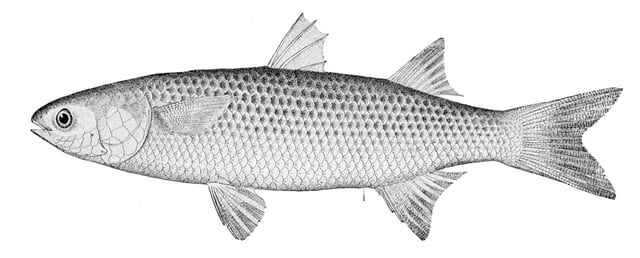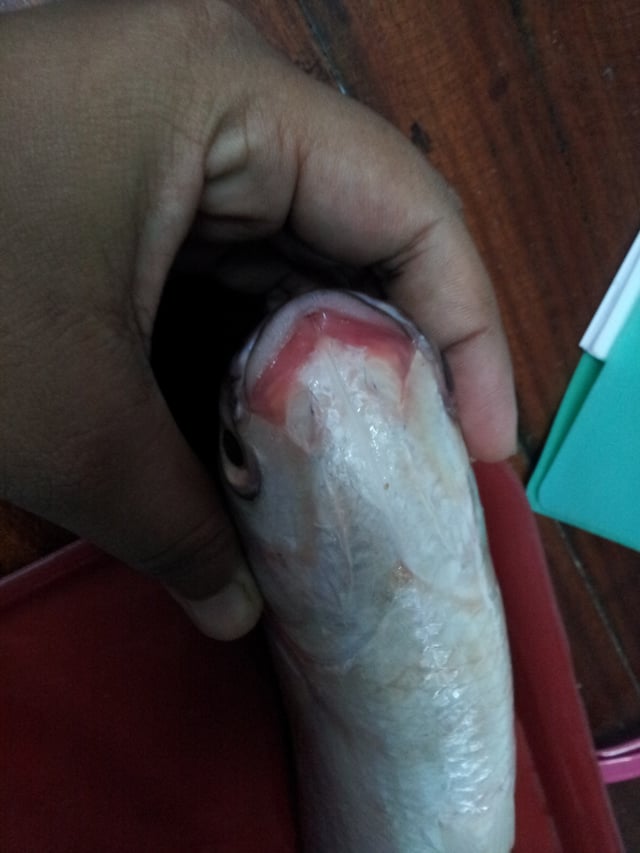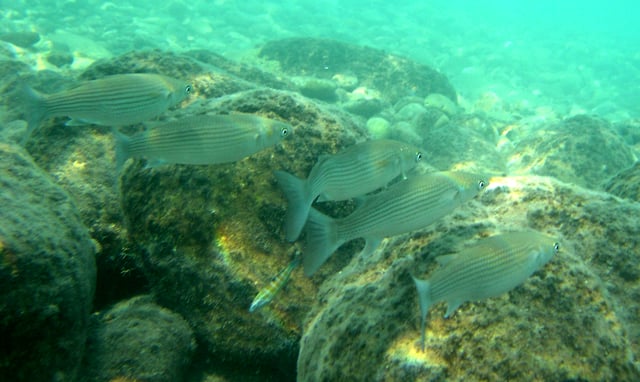Mullet (fish)
-xsonZjbHDHjIX0X6yikVesbxesBTcE)
Mullet (fish)
-xsonZjbHDHjIX0X6yikVesbxesBTcE)
| Mullet | |
|---|---|
| Mugil cephalus | |
| Scientific classification | |
| Kingdom: | Animalia |
| Phylum: | Chordata |
| Class: | Actinopterygii |
| (unranked): | Acanthomorpha |
| Superorder: | Acanthopterygii |
| Clade: | Percomorpha |
| (unranked): | Ovalentaria |
| Order: | Mugiliformes |
| Family: | MugilidaeJarocki,Jarocki 1822 |
| Genera | |
| See text. | |
The mullets or grey mullets are a family (Mugilidae) of ray-finned fish found worldwide in coastal temperate and tropical waters, and some species in fresh water.[1] Mullets have served as an important source of food in Mediterranean Europe since Roman times. The family includes about 78 species in 20 genera.[2]
Mullets are distinguished by the presence of two separate dorsal fins, small triangular mouths, and the absence of a lateral line organ. They feed on detritus, and most species have unusually muscular stomachs and a complex pharynx to help in digestion.[1]
| Mullet | |
|---|---|
| Mugil cephalus | |
| Scientific classification | |
| Kingdom: | Animalia |
| Phylum: | Chordata |
| Class: | Actinopterygii |
| (unranked): | Acanthomorpha |
| Superorder: | Acanthopterygii |
| Clade: | Percomorpha |
| (unranked): | Ovalentaria |
| Order: | Mugiliformes |
| Family: | MugilidaeJarocki,Jarocki 1822 |
| Genera | |
| See text. | |
Behavior
A common noticeable behavior in mullet is the tendency to leap out of the water.
There are two distinguishable types of leaps: a straight, clean slice out of the water to escape predators and a slower, lower jump while turning to its side that results in a larger, more distinguishable, splash.
The reasons for this lower jump are disputed, but have been hypothesized to be in order to gain oxygen rich air for gas exchange in a small organ above the pharynx.[3]
Classification and naming

Mugil cephalus

Thick lips of a mullet

Mullets in the Mediterranean Sea
Taxonomically, the family is currently treated as the sole member of the order Mugiliformes, but as Nelson says, "there has been much disagreement concerning the relationships" of this family.[4] The presence of fin spines clearly indicates membership in the superorder Acanthopterygii, and in the 1960s, they were classed as primitive perciforms,[5] while others have grouped them in Atheriniformes.[6] They are classified as an order, Mugiliformes, within the subseries Ovalentaria of the clade Percomorpha in the 5th Edition of Fishes of the World.[7]
In North America, "mullet" by itself usually refers to Mugilidae.
In Europe, the word "mullet" is usually qualified, the "grey mullets" being Mugilidae and the "red mullets" or "surmullets" being Mullidae, notably members of the genus Mullus, the red mullets.[8] Outside Europe, the Mullidae are often called "goatfish".[9] Fish with common names including the word "mullet" may be a member of one family or the other, or even unrelated such as the freshwater white sucker (Catostomus commersonii).[10]
The following genera were accepted as making up the Mugilidae:[2]
Mugil
Chelon
Agonostomus
Cestraeus
Joturus
Myxus
Chaenomugil
Rhinomugil
Neomyxus
Liza
Trachystoma
Oedalechilus
Ellochelon
Sicamugil
Aldrichetta
Moolgarda
Crenimugil
Xenomugil
Valamugil
Paramugil
Agonostomus
Aldrichetta
Cestraeus
Chaenomugil
Chelon
Crenimugil
Dajaus
Ellochelon
Gracilimugil
Joturus
Minimugil
Mugil
Myxus
Neomyxus
Neochelon
Oedalechilus
Osteomugil
Parachelon
Paracrenimugil
Paramugil
Planiliza
Plicomugil
Pseudomyxus
Rhinomugil
Sicamugil
Squalomugil
Trachystoma
